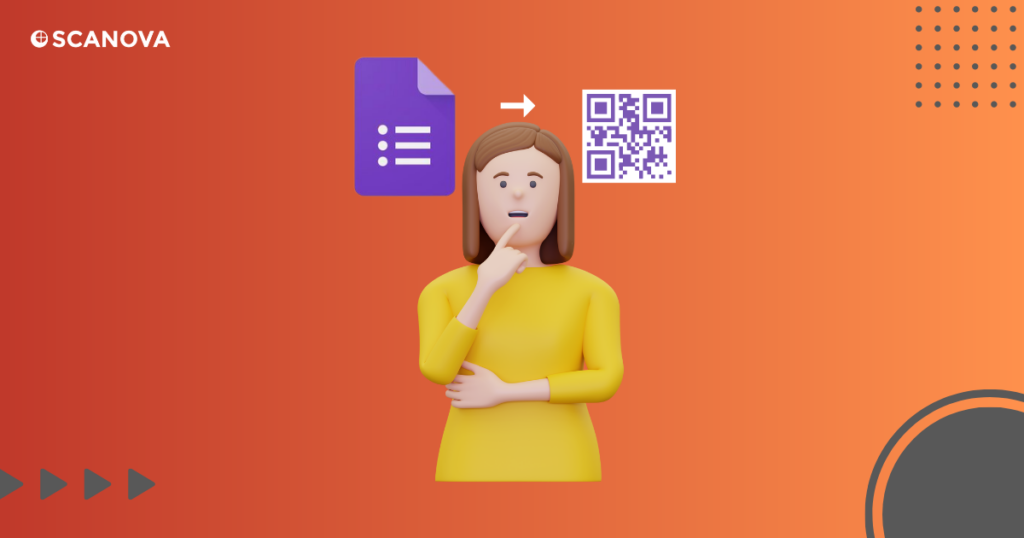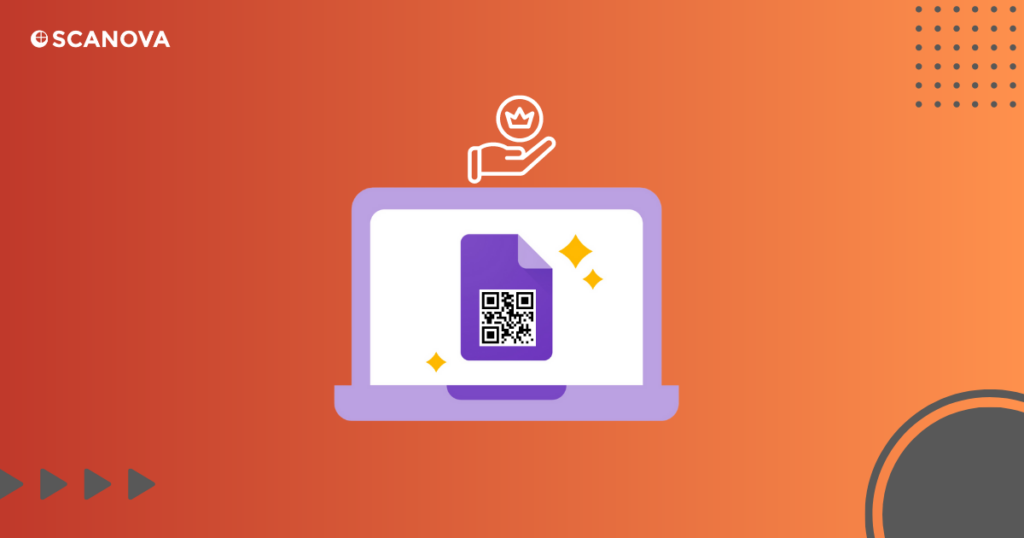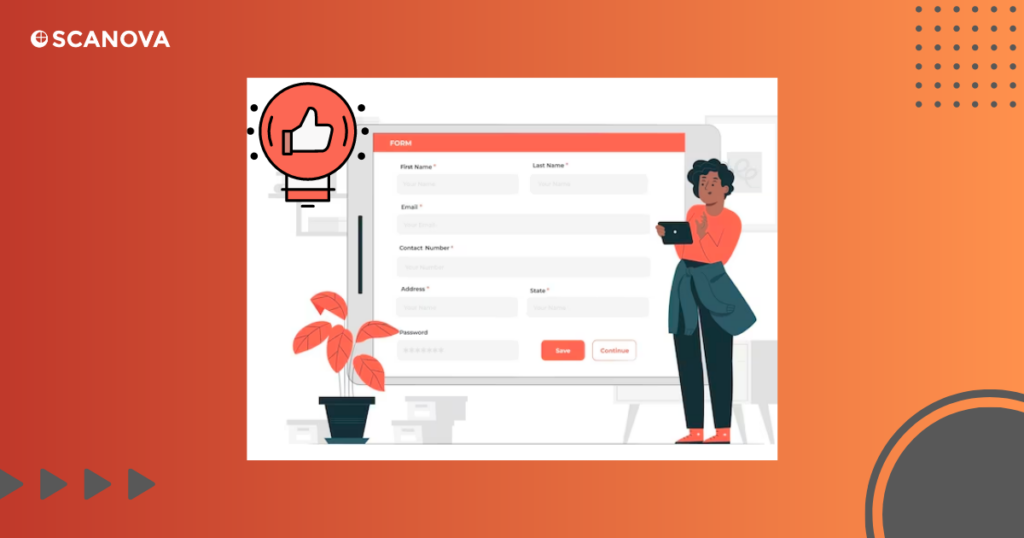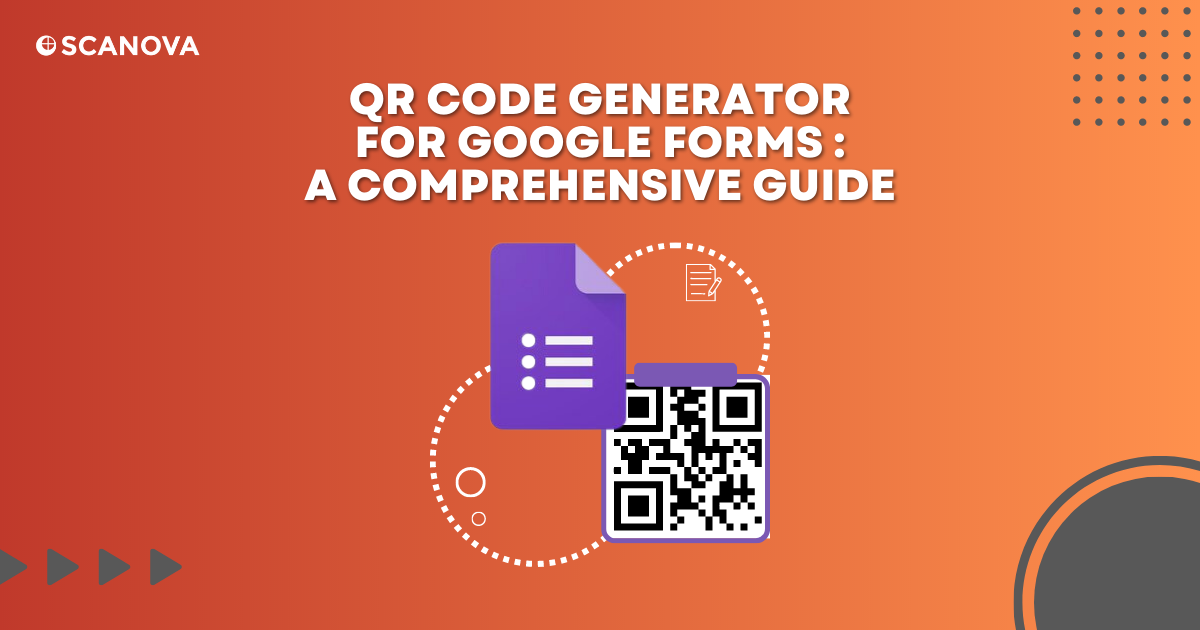You want to gather feedback. It could be course feedback from your students, customers, guests, or anyone else. So you need tools that make your work easier, faster, and more effective. That’s where a QR Code generator for Google Forms comes in.
In this comprehensive guide, we’ll dive into the world of Google Forms QR Codes. We’ll explore what they are, how they work, and why they’re the tool you didn’t know you needed.
So, get ready to step into the future of data collection with us. Let’s get started!
A. Understanding Google Forms QR Code

- Definition and Function
A Google Forms QR Code is a unique, scannable code that links directly to a Google Form. It’s a simple yet powerful tool that streamlines data collection. Whether you’re conducting a survey, collecting feedback, or registering event attendees, a QR Code can make the process a breeze.
- How does it work?
Creating a Google Forms QR Code is straightforward. You start by generating a Google Form and publishing it.
Then, you use a QR Code generator to create a QR Code linked to your form. When a person scans the QR Code with their smartphone, they’re taken directly to your form. No typing, no searching, just a quick scan and they’re in.
B. Benefits of Google Forms QR Code

Let’s take a look at the benefits of using a QR Code generator for Google Forms.
- Audience reach
A major advantage of using a QR Code generator for Google Forms is the potential to reach a larger audience. QR Codes can be shared virtually anywhere, from social media posts to printed flyers, expanding your form’s visibility.
- User experience
QR Codes enhance user experience by making form filling faster and more convenient. Users simply scan the code and fill out the form on their device. There is no need to type in a long URL or navigate multiple web pages.
- Versatility
Google Forms QR Codes are versatile and can be used in various sectors. Whether you’re in education, healthcare, or event management, you can leverage QR Codes to streamline data collection and improve efficiency.
C. Creating Google Forms QR Code

- QR Code generators
Creating QR Codes for Google Forms is a breeze with the right tools. Among the numerous QR Code generators available, three stand out due to their user-friendly interfaces, robust features, and reliable performance: QRCodeChimp, QR Code Generator, and Scanova.
- Scanova
Scanova is a popular QR Code generator offering a blend of simplicity and advanced features. It allows for extensive customization, including adding logos and changing colors.
Scanova also offers detailed analytics, providing insights into scan locations, times, and devices used. Its dynamic QR Code feature allows for updates even after printing, making it a flexible choice for various needs.
- QRCodeChimp
QRCodeChimp is a versatile tool that offers a wide range of customization options. You can change the color, shape, and design of your QR Code to match your brand identity.
It also provides analytics, allowing you to track and analyze the performance of your QR Codes. One of its standout features is the ability to create dynamic QR Codes, which you can edit even after they get printed.
- QR Code Generator
It is known for its simplicity and ease of use. It offers basic customization options and analytics features. It’s a great choice for beginners or those who need to create a QR Code quickly and efficiently.
Each of these tools brings unique strengths, making the process of creating a QR Code for Google Forms efficient and effective.
- Creation process
Here’s how you can create QR Codes for Google Forms,
Step 1: Create the Google Form and copy its sharable URL
Step 2: Paste the URL into the QR Code Generator
Step 3: Customize and Generate Your QR Code
Step 4: Test and Download Your QR Code
Before you start using your QR Code, it’s important to test it. Scan the code with a QR Code scanner or your phone’s camera to ensure it directs to the correct Google Form. If everything works as expected, you can download the QR Code for use.
And there you have it! You’ve created a Google Forms QR Code.
Generate a QR Code For Your Unique Case
START TODAY!
D. Optimizing Google Forms QR Code

1. Design and branding
The design of your QR Code plays a crucial role in its effectiveness. Customizing your QR Code to align with your brand makes it visually appealing and promotes brand recognition.
Most QR Code generators allow you to change the color of the code, add a logo, or even use a custom shape. This way, your QR Code can extend your brand identity, making it instantly recognizable to your audience.
2. Call to action
A compelling call to action (CTA) can significantly increase the scan rate of your QR Code. By clearly communicating what users will gain from scanning the code, you can motivate them to take action. A CTA like “Scan to complete our survey” or “Scan for a chance to win” can create a sense of urgency and excitement, encouraging more scans.
3. Dynamic QR Codes
Dynamic QR Codes offer a level of flexibility that static QR Codes don’t. They can be edited even after being printed, allowing you to update the linked Google Form without having to create a new QR Code.
This is particularly useful if you need to make changes to your form or if you want to reuse the same QR Code for different forms. With dynamic QR Codes, you can ensure your QR Code remains relevant and up-to-date, maximizing its effectiveness.
E. Tracking and analytics

1. Importance of tracking
In the world of digital marketing, data is king. Tracking your QR Code scans is crucial for measuring their effectiveness and understanding your audience’s behavior.
With this data, you get valuable insights into when, where, and how often your QR Code got scanned.
This information can help you adjust your strategy, optimize your QR Code usage, and ultimately, achieve better results. So no matter if you want to increase form submissions, improve engagement, or understand your audience, tracking is a must.
2. Analytics features
Most QR Code generators come equipped with robust analytics features. These provide information, including the number of scans, the location of scans, and devices used for scanning.
Some generators even offer real-time analytics, allowing you to monitor performance as it happens. This data can help you understand your audience, identify trends, and make data-driven decisions for better campaign performance.
F. Best practices for Google Forms QR Code

Here are the best practices you should follow for Google Forms QR Code,
1. Use the correct link
It’s important to use the correct link when creating a Google Forms QR Code.
A wrong link can lead to a poor user experience, lower response rates, and even loss of trust in your brand.
Always double-check that you’re using the correct Google Form link in your QR Code. It’s a simple step that can make a big difference in the success of your QR Code.
2. Optimize form settings
The user experience doesn’t end with scanning the QR Code; it extends to filling out the form as well.
Optimize your Google Form settings to make it easy and convenient for users to complete.
Make sure your form is easy to navigate, the questions are clear and concise, and the response options are straightforward. Consider using multiple-choice questions or dropdowns to speed up the process and improve the user experience.
3. Follow-up
Following up with people who submit your form is a good practice that shows you value their input.
It can also lead to higher engagement rates and foster a sense of community. Whether it’s a simple thank you message, a confirmation email, or a personalized response, a follow-up can help build positive relationships with your audience.
Generate a QR Code For Your Unique Case
START TODAY!
G. QR Codes For Google Forms: Business use cases

Google Forms QR Codes have proven to be a versatile tool for businesses across various sectors. They help with streamlined processes, audience engagement, and data gathering.
For instance, consider a retail store. Customer feedback is crucial for understanding customer needs, improving products, and enhancing the shopping experience.
A retail store can easily collect customer feedback using a Google Forms QR Code. You may place them at the checkout counter or on receipts, encouraging customers to scan and share their experience.
Similarly, healthcare providers can use Google Forms QR Codes to streamline patient registration. Instead of filling paper forms, patients can simply scan a QR Code and fill the registration form on their own device.
The above are just two examples of how businesses can leverage Google Forms QR Codes. The possibilities are endless, making it a valuable tool for any business looking to improve data collection and enhance user experience.
H. Start Using a QR Code generator for Google Forms to make data collection more efficient
QR Code generators for Google Forms are a powerful tool that can change the way you collect and manage data. They offer a simple, efficient, and user-friendly solution for reaching a larger audience, enhancing user experience, and streamlining data collection across various sectors.
Regardless of the purpose, leveraging Google Forms QR Codes can significantly enhance your data collection process.
So why wait? Start exploring the world of Google Forms QR Codes today and step into the future of data collection.
Generate a QR Code For Your Unique Case
START TODAY!
